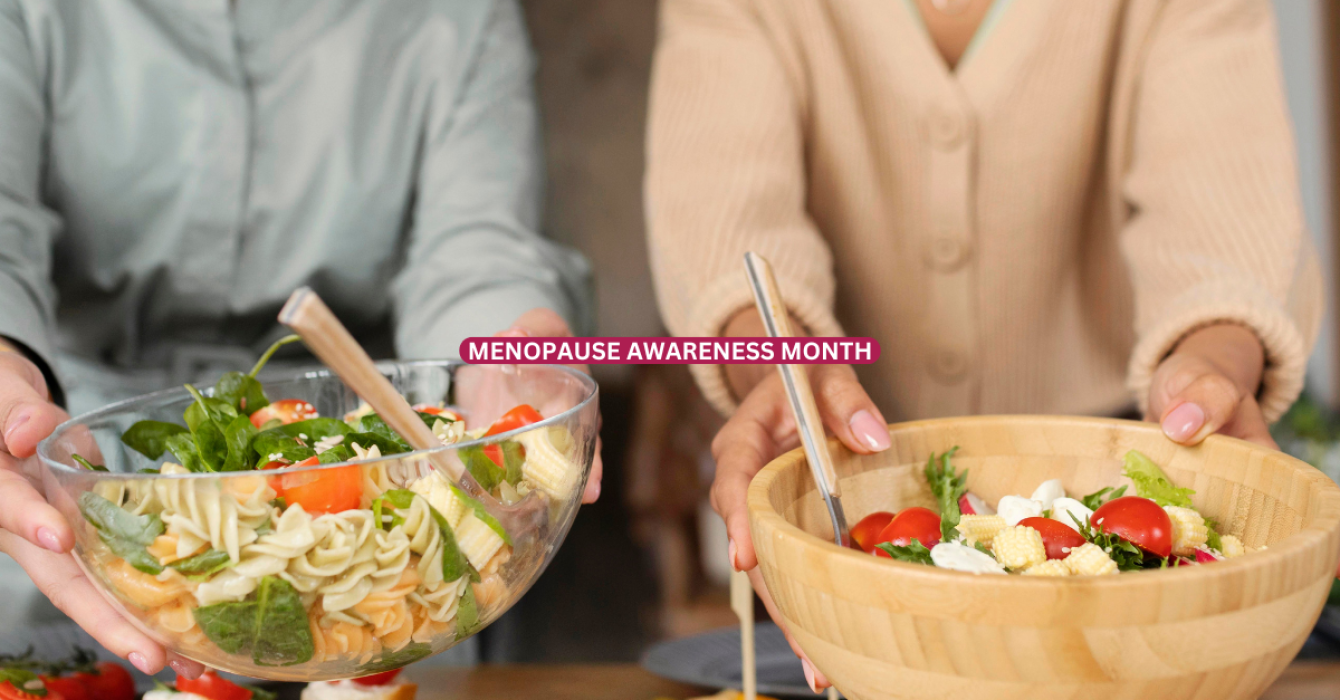Menopause specialist Sarah Shah shares the best foods to relieve the symptoms and maintain a healthy weight.
Sign our petition asking for menopause support to be increased on the NHS.
“My cholesterol went through the roof when I hit perimenopause,” remembers Sarah Shah. “My blood pressure also went up.” Now 50, Sarah started perimenopause at 36, but learnt from experience how adapting her diet could help some of the issues that arose from her changing hormone levels. She became a certified nutritionist and pivoted from financial advisor to menopause wellness coach in 2022.
Symptoms such as anxiety, hot flushes and insomnia are well known. But perimenopause and postmenopause are also associated with a greater risk of osteoporosis, heart disease and weight gain.
These can be successfully managed through a healthy diet, Sarah believes. The right foods can top up depleted oestrogen levels, support healthy bone structure and brain activity, and promote good gut health and hormone balance, which can help with weight management.
Read more: 5 of the best forms of exercise for menopause

The best foods to add to your menopause diet
Soy-based products like tofu and tempeh contain phytoestrogen. This plant compound, says Sarah, can replicate some of the function of the oestrogen that our bodies produce, such as regulating cholesterol.
Black seeds, chickpeas, lentils and sesame seeds help balance hormone levels naturally. Leafy greens, kale, broccoli, almonds and dairy or fortified plant milk are excellent sources of calcium, which is essential for bone health.
Omega-3 fatty acids — found in walnuts, chia seeds, flax seeds and oily fish such as salmon and mackerel — promote heart health and can reduce inflammation. This helps with symptoms like hot flashes and mood swings.
Fibre from wholegrains, fruits, vegetables, legumes and nuts is also important, says Sarah: good digestion supports weight management, as do protein sources such as lean meat.
Antioxidant-rich foods, like dark chocolate, and fruits and vegetables — such as raspberries and blueberries, spinach and carrots — can help combat the cell damage that impairs brain function. Green tea and spices like turmeric help, too. Rather than ‘five a day’, Sarah recommends ’30 fruit and veg a week’ to ensure a sufficient variety of nutrients.
Read more: Menopause treatments to discuss with your doctor (from HRT to non-hormonal options)

Foods that make perimenopause symptoms worse
Spicy foods, says Sarah, can trigger hot flashes. Alcohol can contribute to weight gain and, like caffeine, disrupt sleep.
Processed and fried foods tend to be high in unhealthy fats, while foods high in added sugar can cause blood sugar spikes and crashes. These impact on our mood and energy levels. Salty foods can cause water retention and bloating.
Creating a healthy eating plan
At least 50% of women struggle with weight gain during menopause. Sarah suggests keeping a food diary, to see where changes can be made; eating slowly and mindfully; and not snacking until you’ve had fruit or veg.
Most important, she says, is to not approach it as a diet, but as a sustainable, long-term lifestyle change. This, ultimately, will lead to better health, and encourage a positive relationship with our bodies.
“You can’t hate yourself into being skinny,” she notes. “Weight does tend to pile on around the tummy, and some people find that it goes onto the bottom and hips as well.
“While it’s not healthy to carry excess weight, you’ve got to like yourself where you are now. It’s about treating yourself with compassion and kindness.”













